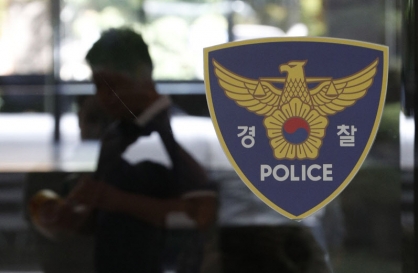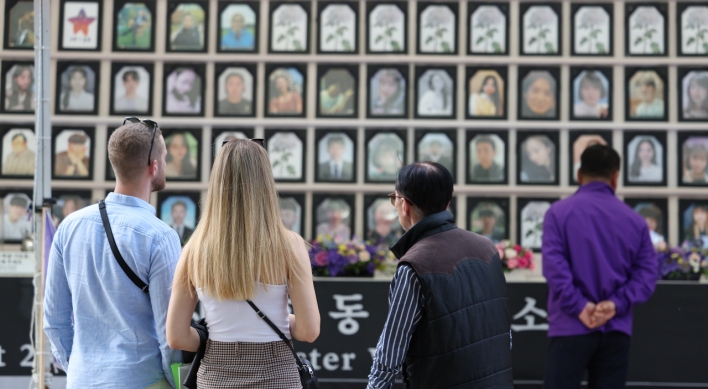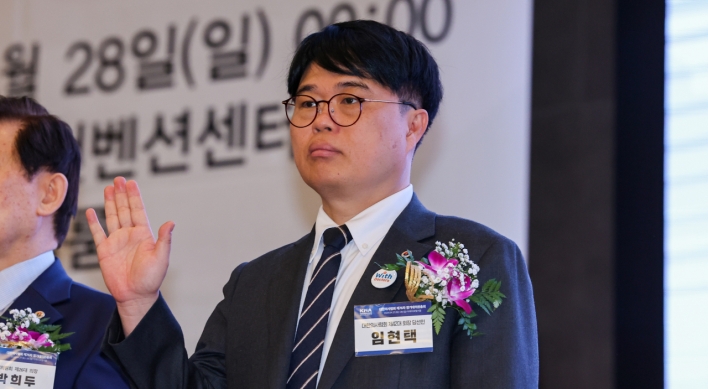
▲민수사업 매출 비중 50%까지 확대 예정
▲연이은 공정 자동화 성공으로 원가 절감 성공. 보잉, 에어버스 주요 글로벌 협력사로 부상
최근 연이은 국산 초음속기 T-50 해외 수출로 주목 받고 있는 국내 유일의 항공기 제조사 한국항공우주산업 (KAI, 이하 카이)은 미래 성장 동력으로 민수사업 확대에 주목하고 있다고 밝혔다.
더딘 경기회복으로 시름이 깊어지고 있는 항공사 대비, 경상남도 사천시에 위치한 항공기 제조사 카이의 생산라인은 밀려드는 주문에 그 어느 때 보다 활기가 넘쳐 나고 있다.
“군수사업 뿐 아니라 민수사업 쪽에서 주문이 현저히 늘고 있다. 전체 항공기 시장으로 보면 민수시장이 군수 시장보다 크다. 따라서, 카이 미래 성장은 민수사업을 어떻게, 얼마나 늘리냐가 관건이 될 것”이라고 구관혁 카이 대외협력실 부장이 말했다.
카이의 민수사업은 글로벌 항공기 양대 산맥 보잉과 에어버스로부터 주문을 받아 부품과 기체구조물 등을 조립 생산해 납품하는 비즈니스를 통상 지칭한다.
2013년 카이는 2조 160억원의 매출을 달성했으며, 민수사업이 매출의 33%를 차지했다. 하이투자증권 리포트에 따르면 카이는 2020년 매출 10조 목표 달성을 위해 민수사업의 매출 비중을 향후 50%까지 끌어올릴 것으로 전망했다.
카이의 민수사업 확장 계획의 배경에는 세계 상용기의 호황 전망이 한 몫하고 있다는 분석이다. 작년 보잉이 발표한 세계 항공기 시장 전망 리포트는 폭발적인 항공교통 수요증가세로 인해 향후 20년간 3만 5천대의 새로운 상용기가 필요하다고 전망했다. 이 중 2만 5천대는 규모가 작은 단일통로 항공기 (single-aisle planes)가 될 예정이며, 이 중 1만 3천대는 아시아 항공사에 인도될 것으로 전망했다.
하이투자증권 김익상 연구원은 세계 항공기의 대다수를 제작, 공급하고 있는 보잉과 에어버스의 글로벌 협력업체가 많지 않아 세계 항공기 수요 증가는 카이의 민수사업 성장에 긍정적인 요인이 될 것이라고 말했다.
``군수 쪽 비즈니스 대비, 카이의 민수 사업의 대중적 인지도가 낮은 것이 사실인데, 카이는 보잉과 에어버스의 주요 글로벌 협력사로 성장한 지 오래다. 일례로, 카이는 에어버스의 가장 최근 모델인 A350 날개의 핵심 부품인 윙 립 (wing rib)을 독점 공급하고 있고, 보잉 787 윙 박스의 독점 제작 공급사이기도 하다. 또한, 보잉의 공격 헬기 아파치의 동체를 2004년부터 독점 제작 공급하고 있다’’ 고 박규철 카이 개발본부 국제공동설계 팀 팀장은 말했다.
``카이는 보잉, 에어버스 사의 글로벌 핵심 협력사로서, 디자인, 개발 등 초기 프로젝트 과정부터 참여해 발주사와 위험 (risk)를 함께 공유하고, 생산을 독점적으로 담당해 수익을 나누는, ‘위험 분담 파트너 (risk sharing partner)' 중 하나로 성장했다’’고 그는 덧붙였다.
보잉, 에어버스 부품, 기체 조립 주문 수준을 위한 경쟁이 날로 치열해 지면서 카이는 경쟁우위를 선점하기 위해 공장 ‘자동화’에 방점을 두고 투자했다.
사천 카이 단지에 위치한 A350 윙 립 생산 공장은 공정 100% 자동화를 목표로 설계, 작년 말 준공했다.
``항공기 공정 자동화는 세계적으로도 드문 시도다. 수주 경쟁력을 높이기 위해 고정 비용을 줄일 수 밖에 없고 이를 위해 자동화는 필수불가결한 선택이었다. 다른 나라에 선례가 없어 완벽한 자동화 공정을 탄생시키기 위해 공장 설계 과정에서 수백번도 넘은 3D 도면 작업을 실시해 이룬 결실이다”며 공정 설계를 담당한 김병주 팀장이 소회했다.
또한, 지난달 경남 산청에 준공한 에어버스의 인기모델 A320의 항공기 날개 하부 구조물(wing bottom panel) 독점 생산 전용 공장 역시 대부분의 공정을 자동화 시켰다.
“산청공장은 2014년 5월 첫 납품을 시작으로 2015년 말부터 월40대를 생산, 납품할 예정으로 향후 2025년까지 1조 4,000억원의 매출을 달성할 것으로 예상되어, KAI의 미래 성장 목표 달성에 새로운 시금석이 될 것으로 확신한다”고 이진재 산청공장 실장은 말했다.
(코리아헤럴드 서지연 기자)
<관련 영문기사>
Commercial aviation business drives growth of KAI
SACHEON, South Gyeongsang Province ― The headquarters of Korea Aerospace Industries in Sacheon is alive with activity, boosted by recent orders not only from the defense sector but also from the world’s top two commercial aircraft makers ― Boeing and Airbus.
As the country’s only plane manufacturer since its establishment in 1999, KAI produces all types of aircraft, ranging from supersonic advanced trainer jets to helicopters and drones.
“The company is entering a growth phrase,” Ku Kwan-hyuk, a senior manager from the strategic public relations and cooperation division at KAI, told The Korea Herald.
“Besides rising demand for Korean aircraft from the global defense industry, a robust backlog in the firm’s commercial aviation business is fueling the growth.”
KAI’s main business in the commercial aviation sector is supplying key parts and frames to Boeing and Airbus.
Industry watchers said KAI’s backlog of commercial orders stands at around 5 trillion won ($4.9 billion).
“Compared with defense orders, the firm’s commercial business has been relatively unknown to the public, but the latter business made up 33 percent of the firm’s total sales in 2013,” Ku said. KAI’s sales stood at around 2 trillion won ($1.9 billion) last year.
“Few know that KAI is the sole manufacturer of the wing ribs for the Airbus 350, and of the wing box for Boeing’s 787,” said Park Gyu-cheul, a senior manager from KAI’s research and development division. The plane maker has also been the sole manufacturer of fuselages for the Apache, Boeing’s advanced attack helicopter, since 2004.
“The company considers the commercial aviation business important for future growth,” Ku said.
Industry watchers said KAI will invest more in its commercial business, looking to make the sector account for 50 percent of its sales.
Behind the investment plan is a global aviation boom. According to Boeing’s forecast published in 2013, more than 35,000 new aircraft ― worth perhaps $4.8 trillion ― will be needed over the next 20 years. Almost 25,000 of them will be single-aisle planes, and almost 13,000 of them will be used in Asia.
Hi Investment & Securities predicted that the KAI is expected to take advantage of the global aviation trend as the global pool of suppliers for Boeing and Airbus is limited.
“KAI is no longer just a parts supplier for the world’s top two civil airline makers,” Park said.
“In many cases, the company participates in a project from the development stage with Boeing or Airbus as a risk-and-revenue sharing partner, based on long-term contact.”
In the latest development, KAI announced in February it would participate in a bid to become a risk-sharing partner for the development and production of the fuselage and wings of Boeing’s 777X aircraft.
Beating rivals with automation
The emergence of KAI as a key supplier for Boeing and Airbus results not only from the company’s advanced technology, but also from cost cuts through the automation of production.
“It was the world’s first trial to build an automated process to manufacture wing ribs of an airline,” said Kim Byung-joo, who designed the automation plant to produce a wing rib for the A350.
With the completion of the world’s largest flexible manufacturing system in the KAI complex in Sacheon, the company expects to cut fixed production costs by 30 percent.
Another automation project run by KAI is its newly built Sancheong plant to supply 460 wing-bottom panels for the A320 aircraft over the next 12 years. The plant was completed last month in Sancheong County, South Gyeongsang Province, 30 minutes’ drive from the Sacheon headquarters.
“The automation of production was key to winning the $1.2 billion project,” said Lee Jin-jae, the head of Sancheong plant.“The success of the two automated plants will give a strong and unique competitive edge to KAI amid strong competition to win multibillion-dollar orders from passenger jet makers.”
Kim Ik-sang, a stock analyst from Hi Investment & Securities, projected that KAI will be on track to fulfill its vision of becoming one of the top 15 aerospace powerhouses in the world by 2020 with 10 trillion won in sales.
By Seo Jee-yeon (jyseo@heraldcorp.com)
Commercial aviation business drives growth of KAI
SACHEON, South Gyeongsang Province ― The headquarters of Korea Aerospace Industries in Sacheon is alive with activity, boosted by recent orders not only from the defense sector but also from the world’s top two commercial aircraft makers ― Boeing and Airbus.
As the country’s only plane manufacturer since its establishment in 1999, KAI produces all types of aircraft, ranging from supersonic advanced trainer jets to helicopters and drones.
“The company is entering a growth phrase,” Ku Kwan-hyuk, a senior manager from the strategic public relations and cooperation division at KAI, told The Korea Herald.
“Besides rising demand for Korean aircraft from the global defense industry, a robust backlog in the firm’s commercial aviation business is fueling the growth.”
KAI’s main business in the commercial aviation sector is supplying key parts and frames to Boeing and Airbus.
Industry watchers said KAI’s backlog of commercial orders stands at around 5 trillion won ($4.9 billion).
“Compared with defense orders, the firm’s commercial business has been relatively unknown to the public, but the latter business made up 33 percent of the firm’s total sales in 2013,” Ku said. KAI’s sales stood at around 2 trillion won ($1.9 billion) last year.
“Few know that KAI is the sole manufacturer of the wing ribs for the Airbus 350, and of the wing box for Boeing’s 787,” said Park Gyu-cheul, a senior manager from KAI’s research and development division. The plane maker has also been the sole manufacturer of fuselages for the Apache, Boeing’s advanced attack helicopter, since 2004.
“The company considers the commercial aviation business important for future growth,” Ku said.
Industry watchers said KAI will invest more in its commercial business, looking to make the sector account for 50 percent of its sales.
Behind the investment plan is a global aviation boom. According to Boeing’s forecast published in 2013, more than 35,000 new aircraft ― worth perhaps $4.8 trillion ― will be needed over the next 20 years. Almost 25,000 of them will be single-aisle planes, and almost 13,000 of them will be used in Asia.
Hi Investment & Securities predicted that the KAI is expected to take advantage of the global aviation trend as the global pool of suppliers for Boeing and Airbus is limited.
“KAI is no longer just a parts supplier for the world’s top two civil airline makers,” Park said.
“In many cases, the company participates in a project from the development stage with Boeing or Airbus as a risk-and-revenue sharing partner, based on long-term contact.”
In the latest development, KAI announced in February it would participate in a bid to become a risk-sharing partner for the development and production of the fuselage and wings of Boeing’s 777X aircraft.
Beating rivals with automation
The emergence of KAI as a key supplier for Boeing and Airbus results not only from the company’s advanced technology, but also from cost cuts through the automation of production.
“It was the world’s first trial to build an automated process to manufacture wing ribs of an airline,” said Kim Byung-joo, who designed the automation plant to produce a wing rib for the A350.
With the completion of the world’s largest flexible manufacturing system in the KAI complex in Sacheon, the company expects to cut fixed production costs by 30 percent.
Another automation project run by KAI is its newly built Sancheong plant to supply 460 wing-bottom panels for the A320 aircraft over the next 12 years. The plant was completed last month in Sancheong County, South Gyeongsang Province, 30 minutes’ drive from the Sacheon headquarters.
“The automation of production was key to winning the $1.2 billion project,” said Lee Jin-jae, the head of Sancheong plant.“The success of the two automated plants will give a strong and unique competitive edge to KAI amid strong competition to win multibillion-dollar orders from passenger jet makers.”
Kim Ik-sang, a stock analyst from Hi Investment & Securities, projected that KAI will be on track to fulfill its vision of becoming one of the top 15 aerospace powerhouses in the world by 2020 with 10 trillion won in sales.
By Seo Jee-yeon (jyseo@heraldcorp.com)









![[Music in drama] Rekindle a love that slipped through your fingers](http://res.heraldm.com/phpwas/restmb_idxmake.php?idx=644&simg=/content/image/2024/05/01/20240501050484_0.jpg&u=20240501151646)

![[New faces of Assembly] Architect behind ‘audacious initiative’ believes in denuclearized North Korea](http://res.heraldm.com/phpwas/restmb_idxmake.php?idx=644&simg=/content/image/2024/05/01/20240501050627_0.jpg&u=20240502093000)






